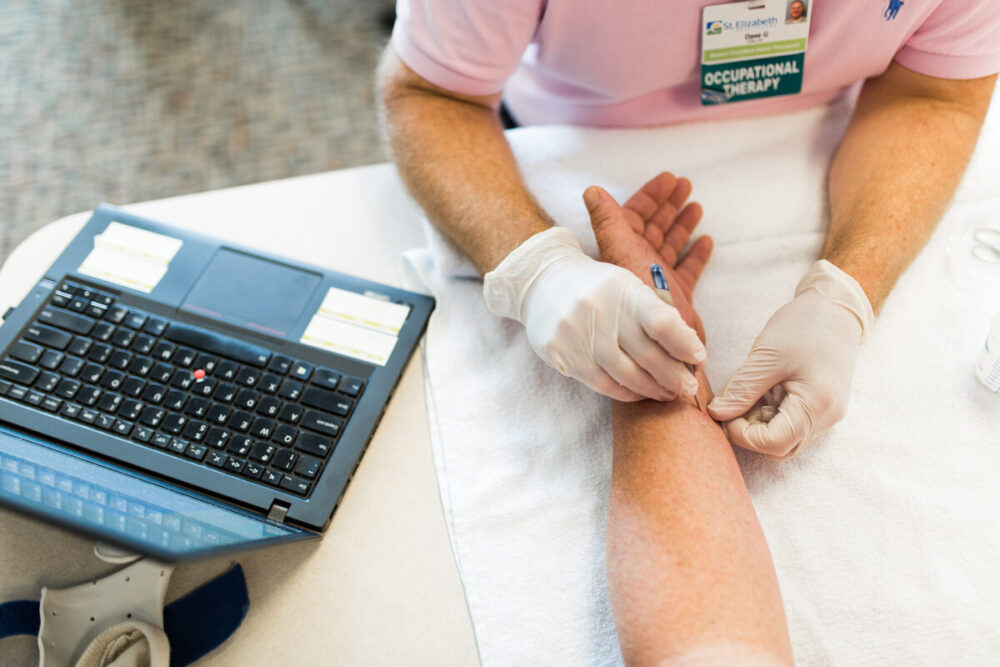We often hear people complain of pain or tingling in their hands and joints. Many of them think that it is transient, but sometimes it can also indicate a disease. Although it can sometimes be transient, it is still good to pay attention to the symptoms and check if it is a carpal tunnel syndrome that not many people have heard of.
What is Carpal Tunnel Syndrome?

The carpal tunnel refers to the anatomy of the hand itself. We can say that all blood vessels and nerves pass through it, as well as the tendons that allow us to move our fingers. This is exactly the reason why a “crowd” is created in the carpal tunnel, because in that case, the median nerve is pressed, which further leads to the appearance of the syndrome. This syndrome is considered to be the most common compression neuropathy.
Symptoms

Symptoms appear in several stages. In the beginning, patients will feel the first symptoms during the night. At first, it’s a tingling in hands, as well as a feeling like someone is stabbing you with needles, especially during performing repeating moves. Over time, the symptoms become more pronounced, and there is a loss of the sense of touch, in the fingers, especially the thumb.
At a later stage, the pain spreads from the wrist to the palm and fingers, and very often to the elbow, and even to the arm. Very often, patients complain of a feeling that the hand is swollen, although it is not. What can be dangerous if you do not react in time is the loss of the feeling on heat, which can lead to burns.
In the advanced stage, there is an inability to catch smaller objects and the loss of strength, so as the loss of muscle mass.
Symptoms can be permanent or intermittent, depending on whether the nerve is pressed. It can also occur in both hands, although it usually occurs in the one we use more. Although this is a syndrome that can affect both men and women, it is more common in women.
Causes of carpal tunnel syndrome

Although we could say that the age group of 40-60 years is the most exposed to this syndrome, lately it has appeared very often in the younger generations as well. It has been proven that it occurs more often in women because they are smaller than men, so the carpal tunnel is narrower. One of the reasons for this is that a large number of younger people spend several hours a day using the keyboard and mouse. Also, people who work a lot with their hands (computer scientists, typists, librarians, masseurs) have a predisposition for the development of the syndrome, since they perform long-lasting repetitive movements at work.
The syndrome often occurs in people with diabetes, rheumatoid arthritis, hypertrophy and amyloidosis. In addition to diabetes, other endocrine diseases can lead to it, too.
Sometimes the syndrome can be a sign of rheumatoid arthritis, so it is recommended to go to a rheumatologist. Another important risk factor is obesity.
It can also occur with hand injuries such as a fracture or sprain, but can also develop during pregnancy and menopause. This syndrome has also been reported in women who have used oral contraceptives.
How is it diagnosed?

If you tell the doctor all the symptoms you have, he will find the diagnosis very easily. A physical examination combined with ultrasound and tests that usually include EMG will show what it is all about.
Making the right diagnosis is a key factor because all the listed symptoms of this syndrome also occur with problems with the cervical spine.
Ignoring the symptoms is not the solution. On the contrary, it only leads to an unnecessary prolongation of difficulties, which will become worse over time. Although there is a possibility that the syndrome will return after the operation, it does not happen in many cases.
Treatment

There is drug therapy to relieve the pain, and if detected in time, wrist immobilization will also help. This will bring relief to patients, especially at night. Another thing to take into account when recovering is to reduce work activities over the next two to six weeks, as well as improve working conditions if possible, or even change jobs.
Physiotherapy is another prescribed method of treatment because it improves tendon extensibility and flexibility. However, these are all therapies that help if the syndrome is not in an advanced stage.
If so, surgery is the most effective treatment method. Although many are afraid even when they only hear this word, this is a routine operation that creates more space in the carpal tunnel and thus removes the pressure on the nerves. To find out more click here. Research has shown that surgery brings relief in more than 95% of cases.
It is important to say that untreated CTS leads to permanent loss of sense of touch and impaired motor skills of the fingers (especially the thumb). Chronic pain in the hand can eventually lead to the inability of its move.
Recovery

Recovery time depends on the patient himself, as well as the stage of the syndrome. It is usually a period of up to three months, and if the syndrome did not last longer than six months before the operation, most of the symptoms disappear immediately.
Prevention for the development of carpal tunnel syndrome

There are many ways a person can take care of their health. Just as walking is recommended for the health of the heart, but also of the whole organism, so you can do some things for yourself and your health to prevent the appearance of this syndrome. If you are doing a job where you make the same movements for a long time, you can prevent this disease by taking several short breaks that you will use to stretch your arms. It is important that your hand position is as comfortable as possible when working and that you use ergonomic equipment at work.





